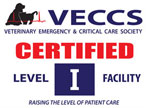Date:
By Dr. Allen Green
For many pet owners, there can be confusing amounts of information regarding so-called alternative therapies. The good news is both human and veterinary medicine have become more open to non-traditional options in healing, from physical therapy and rehabilitation to an exciting new field called regenerative medicine.
I am thrilled to introduce CVRC's newest surgeon, Dr. David Dycus. Dr. Dycus has done much research in this new and exciting field and shares some important information for you this month.
I’m sure you have heard of the term “stem cell” or regenerative medicine for the use of various conditions in people, but is there a use for this modality in veterinary medicine? To take a closer look at the use of regenerative medicine and how this might benefit your canine friend, let’s briefly look at what it actually is.
Regenerative medicine in veterinary medicine really encompasses two broad topics. These are stromal cells (previously known as stem cells) and platelet-rich plasma.
Stromal cells are the body’s master cells from which other specialized cells are generated. They are harvested from various sources such as the bone marrow or adipose (fat) tissue. From the tissue, the stromal cells are captured in a high concentration. These particular cells have the ability to transform into various tissues such as cartilage, bone, fat, muscle or nervous tissue. However, don’t be misled into thinking that stromal cells will generate new cartilage if your dogs suffers from osteoarthritis!
The main goal of stromal cells is to help decrease inflammation, stimulate new blood supply, activate resident “stem” cells, stimulate healing and tissue growth, provide a scaffold for healing tissue, protect resident cells from death and help break down scar tissue in chronic injuries, just to name a few.
Platelets are the smallest cells found in the blood and play a huge role in helping blood clot. Once activated, these cells release substances to allow them to stick together and form a clot. But did you know they also release a number of anti-inflammatory factors, growth factors and secondary mediators that help in tissue healing? These stimulate other cells to the area of injury and aid in speeding up healing. The dog’s blood contains a large amount of platelets, but to generate platelet-rich plasma we collect a sample of blood and spin this down to collect a very concentrated solution of platelets. This concentration of platelets can then be injected into an injured area such as a tendon or ligament and provide a very high concentration of growth factors to stimulate healing much quicker.
Now that you are up to par on regenerative medicine, the next question would be what type of injuries might this be appropriate for? For stromal cells: tendon injuries, ligament injuries, osteoarthritis and augmentation following primary surgical repair are the most common conditions. Platelet-rich plasma is best used to help heal tissues that are not in areas with a lot of vessels, such as with tendon or ligament injuries. It is especially useful for biceps tendinopathy, Achilles tendon injury or shoulder injuries.
Regenerative medicine can be done on an outpatient basis usually only requiring sedation. To harvest stromal cells for use, it does require a surgical procedure and the need for anesthesia. The fat can be collected using a minimally invasive procedure so that recovery time and pain are both minimized. As an added benefit, stromal cells once collected can be stored for future use if repeated injections are needed.
One down side to regenerative medicine is the amount of proven research available. The research available is very promising and clinical trials are currently underway. When used correctly, regenerative medicine certainly has a place in veterinary medicine, especially with our canine athletes to minimize time away from their sport. To find out if your canine friend would be a good candidate for this treatment, please schedule an appointment with the surgery department at CVRC.







